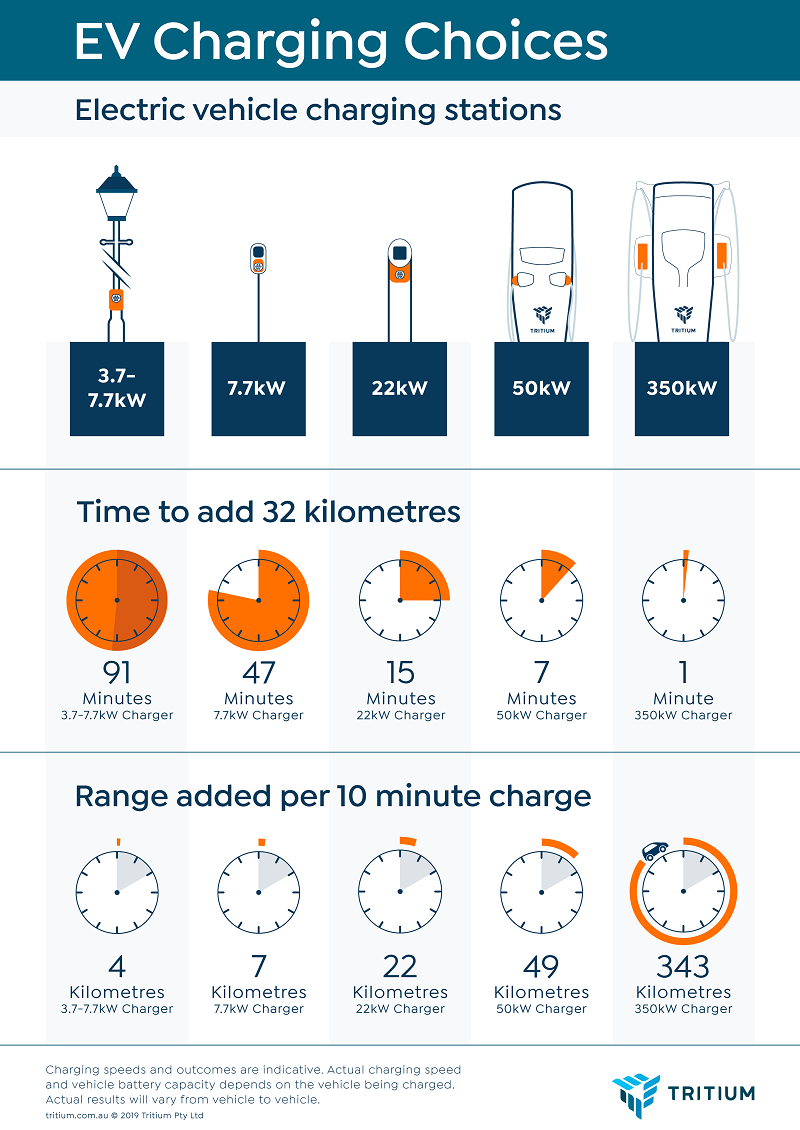Charging is not a big problem, but initially it might sound complex for new electric car users.
In theory, charging of electric vehicles is quite simple as all we have to do to replenish range is to plug them in, at home overnight (the primary way to start every day fully charged) or at the charging point (public or at work). However, the topic is more complex than that, especially for new EV users.
First of all, recharging the batteries in an EV might be conducted using an AC source (through an on-board charger) or DC source (using a significantly bigger off-board DC fast charger, bypassing the on-board charger). Usually, those DC chargers are much higher-power than the AC charging points, which shortens the charging time.
The Australian manufacturer of fast chargers Tritium presents the typical power output of charging points: usually 3.7-22 kW AC and usually 50-350 kW DC:
We will skip here the variety of charging connectors, as in most markets there are just 1-2 dominant AC and DC connectors:
How long it will take to replenish 20 miles/32 km of range?
If we focus on the direct relationship between the power and the result (we are skipping other factors like battery temperature, battery state-of-charge, battery charging limitations), we can see the general difference of effective range replenishing capability:
Using a 7.7 kW charging point (AC) requires 47 minutes to add 20 miles/32 km of range. That is assuming energy consumption below 19 kWh/100 km (62 miles) or 190 Wh/km (over 300 Wh/mile).
If the on-board charger would allow for three-phase charging at 22 kW, the time would be 15 minutes, while at 50 kW DC charging we would have to charge only 7 minutes. That’s a big difference, although DC chargers are often more expensive to use.
How far I will go after a 10-minute recharge?
Here is an inverted question. We stop for 10 minutes at charging points and wonder what will be the result. The theoretical example requires simplification that we can use all the available power for 10 minutes (it’s rarely true in the case of higher power chargers).
The 7.7 kW AC (single-phase) charging point will allow us to go some 4 miles (7 km) more, while the 50 kW DC charger would be good for 30 miles (49 km). That last example shows us one important thing – in case of emergency, we can usually stop for 10 minutes at a 50 kW DC charger to really replenish enough range to complete daily operations. There is no need to stay at the charger for hours.
For long-distance travel, of course, we need to replenish most of the battery capacity (usually to around 80%, after which the charging process slows down significantly). Those are scenarios that require us to use higher-power DC chargers like 100-150 kW, or even twice that in case of top models (200-300 kW).
The charging time should then be between 15-60 minutes, depending on model, our needs to reach the destination and other factors (battery temperature is one of the most important).
Tritium charging info (entire infographic)
Metric unit version:
Source: Read Full Article





